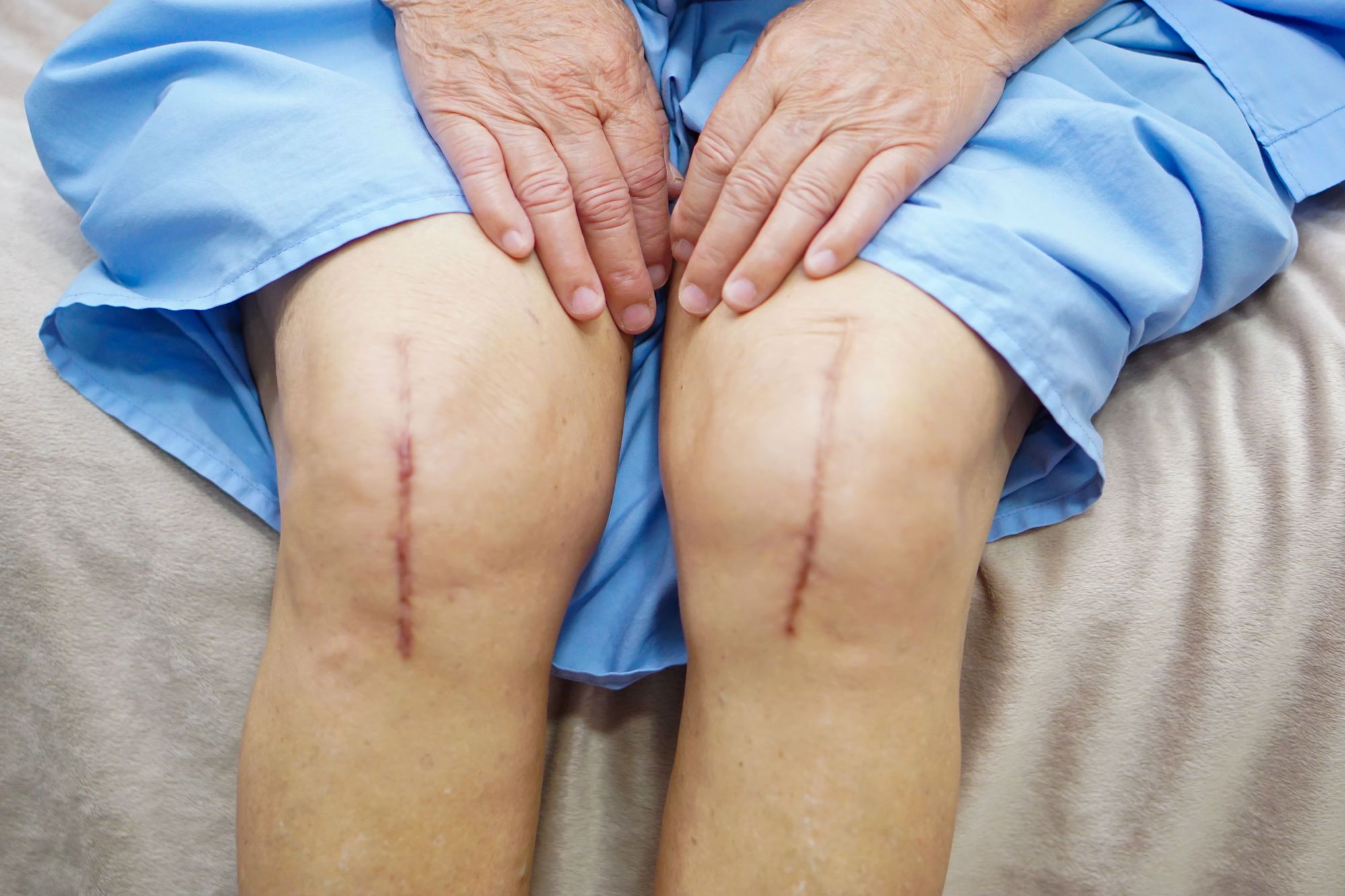Knee arthroscopy is a widely used minimally invasive surgical procedure for diagnosing and treating knee-related problems such as torn ligaments, cartilage damage, and meniscus injuries. While this procedure is typically associated with a shorter recovery time and fewer complications than open surgery, some patients experience burning pain after knee arthroscopy. This burning sensation can be distressing and may have several underlying causes that need to be addressed for effective pain management and recovery.
In this comprehensive guide, we will discuss the potential causes of burning pain after knee arthroscopy, its management, recovery tips, and when to seek medical attention.
Understanding Burning Pain After Knee Arthroscopy

Burning pain after knee arthroscopy can be concerning and may have several underlying causes. Here are some potential reasons and considerations:
Causes of Burning Pain
1. Nerve Damage
A sharp, burning, or shooting pain could be a sign of nerve damage during the surgery. This is less common but possible, especially if nerves are irritated or damaged during the procedure. Nerve-related pain can manifest as tingling, numbness, or hypersensitivity around the knee area.
2. Inflammation and Swelling
Excessive inflammation and swelling are common after arthroscopy and can cause discomfort or pain. Swelling typically increases in the first few days post-surgery and then subsides over time. However, prolonged or excessive swelling can compress surrounding nerves and tissues, resulting in a burning sensation.
3. Insufficient Rehabilitation
Not following the recommended rehabilitation plan can lead to prolonged pain and discomfort. Overexertion too early in the recovery process can exacerbate symptoms, leading to excessive strain on the healing tissues. A lack of movement, on the other hand, can result in stiffness and poor circulation, contributing to persistent burning pain.
4. Infection
Although rare, infection can cause increased pain, warmth, redness, and swelling. An infection following knee arthroscopy can lead to persistent burning pain and other complications. If you suspect an infection, seek medical attention immediately.
5. Avascular Necrosis
Avascular necrosis (AVN) is a condition where bone tissue dies due to a lack of blood supply, leading to pain and bone degradation. Though it is a less common complication, it can occur after arthroscopy and should be diagnosed and treated promptly.
Managing Burning Pain After Knee Arthroscopy
Understanding the underlying cause of burning pain is the first step toward effective management. Here are some strategies to help alleviate discomfort:
1. Rest and Elevation
Keeping your leg elevated can help reduce swelling and alleviate pain. Resting adequately and avoiding unnecessary strain on the knee can facilitate healing and minimize inflammation.
2. Pain Medication
Your doctor may prescribe pain relievers or anti-inflammatory medications to help manage discomfort. Over-the-counter medications such as ibuprofen and acetaminophen can also be used, but they should be taken according to medical advice to avoid potential side effects.
3. Physical Therapy and Gentle Exercises
Engaging in gentle exercises and physical therapy can aid in recovery and reduce pain over time. A structured rehabilitation program focusing on strength, flexibility, and mobility exercises can prevent stiffness and improve overall knee function.
4. Cold and Heat Therapy
Applying ice packs to the affected area during the initial recovery phase can help minimize swelling and numb pain. After the acute phase, heat therapy may help improve blood circulation and reduce persistent burning sensations.
5. Monitoring for Complications
Persistent or worsening pain should not be ignored. If symptoms such as severe burning, redness, fever, or excessive swelling occur, consult your doctor immediately to rule out complications.
Recovery Timeline and Tips
Recovery from knee arthroscopy varies from person to person based on factors like age, overall health, the complexity of the procedure, and adherence to post-operative care. Below is a general recovery timeline and essential tips for a smoother healing process.
Also Read: Bpc 157 For Knee Pain – Discover The Benefits, Uses, and Safety!
Immediate Post-Surgery (Week 1-2)
- Rest, elevate your leg, and apply ice to reduce swelling.
- Take prescribed medications for pain management.
- Start gentle range-of-motion exercises as advised by your doctor.
- Avoid excessive weight-bearing activities.
Weeks 3-6: Gradual Rehabilitation
- Begin physical therapy focusing on strengthening and mobility.
- Incorporate low-impact activities such as stationary cycling or aquatic therapy.
- Continue using ice packs if swelling persists.
- Avoid activities that may strain the knee, such as running or jumping.
Weeks 7-12: Strengthening and Full Recovery
- Engage in more advanced strengthening exercises.
- Gradually return to normal activities based on your progress.
- Continue monitoring for pain or unusual symptoms.
Preventing Burning Pain After Knee Arthroscopy
While some degree of pain and discomfort is expected after knee arthroscopy, certain precautions can help minimize burning pain and enhance recovery:
- Follow Post-Operative Instructions: Adhere to the guidelines provided by your surgeon regarding medication, physical therapy, and weight-bearing activities.
- Avoid Overexertion: Returning to intense physical activities too soon can increase the risk of complications.
- Maintain a Healthy Diet: A diet rich in vitamins and minerals can support tissue healing and reduce inflammation.
- Stay Hydrated: Proper hydration helps reduce muscle cramps and stiffness.
- Monitor for Signs of Complications: Recognizing early symptoms of infection or other complications can prevent severe issues.
When to Seek Medical Attention
While mild discomfort is normal during the healing process, you should seek medical attention if you experience:
- Severe or worsening burning pain
- Signs of infection, including redness, swelling, warmth, or fever
- Persistent numbness or tingling
- Difficulty bearing weight on the knee
- Swelling that does not subside despite rest and ice therapy
FAQ’s
1. How can I differentiate between normal pain and nerve damage after knee arthroscopy?
Normal post-surgical pain gradually improves over weeks and is typically dull or achy. Nerve damage pain is often sharp, burning, or tingling and may come with numbness or weakness. If pain worsens instead of improving, consult your doctor.
2. What are the best ways to reduce swelling after knee arthroscopy?
Elevate your leg, apply ice packs (20 minutes on, 20 minutes off), wear a compression bandage, and follow your doctor’s instructions on gentle movement and anti-inflammatory medications.
3. How long should I expect to experience pain after knee arthroscopy?
Mild to moderate pain can last a few weeks, with significant improvement after 2–4 weeks. Some discomfort with activity may persist for a few months. Persistent or worsening pain should be checked by your doctor.
4. What activities should I avoid to prevent overstimulating my healing knee?
Avoid high-impact activities like running and jumping, excessive bending or twisting, prolonged standing, and heavy lifting. Follow your doctor’s guidance on safe movement and rehabilitation exercises.
5. Can infection symptoms be mistaken for normal recovery pain?
Yes. While some pain, swelling, and warmth are normal, signs of infection include increasing redness, severe swelling, persistent warmth, drainage from incisions, fever, or worsening pain. Contact your doctor if you notice these symptoms.
Conclusion
Experiencing burning pain after knee arthroscopy can be alarming, but understanding its causes and taking appropriate steps can ensure a smoother recovery. By following post-operative care instructions, engaging in proper rehabilitation, and staying alert for any complications, you can reduce discomfort and regain full knee function effectively. If you are struggling with persistent pain, consult your healthcare provider to rule out serious complications and receive a tailored treatment plan for your recovery. A proactive approach to post-surgical care will not only help in managing pain but also improve the long-term health and functionality of your knee joint.






